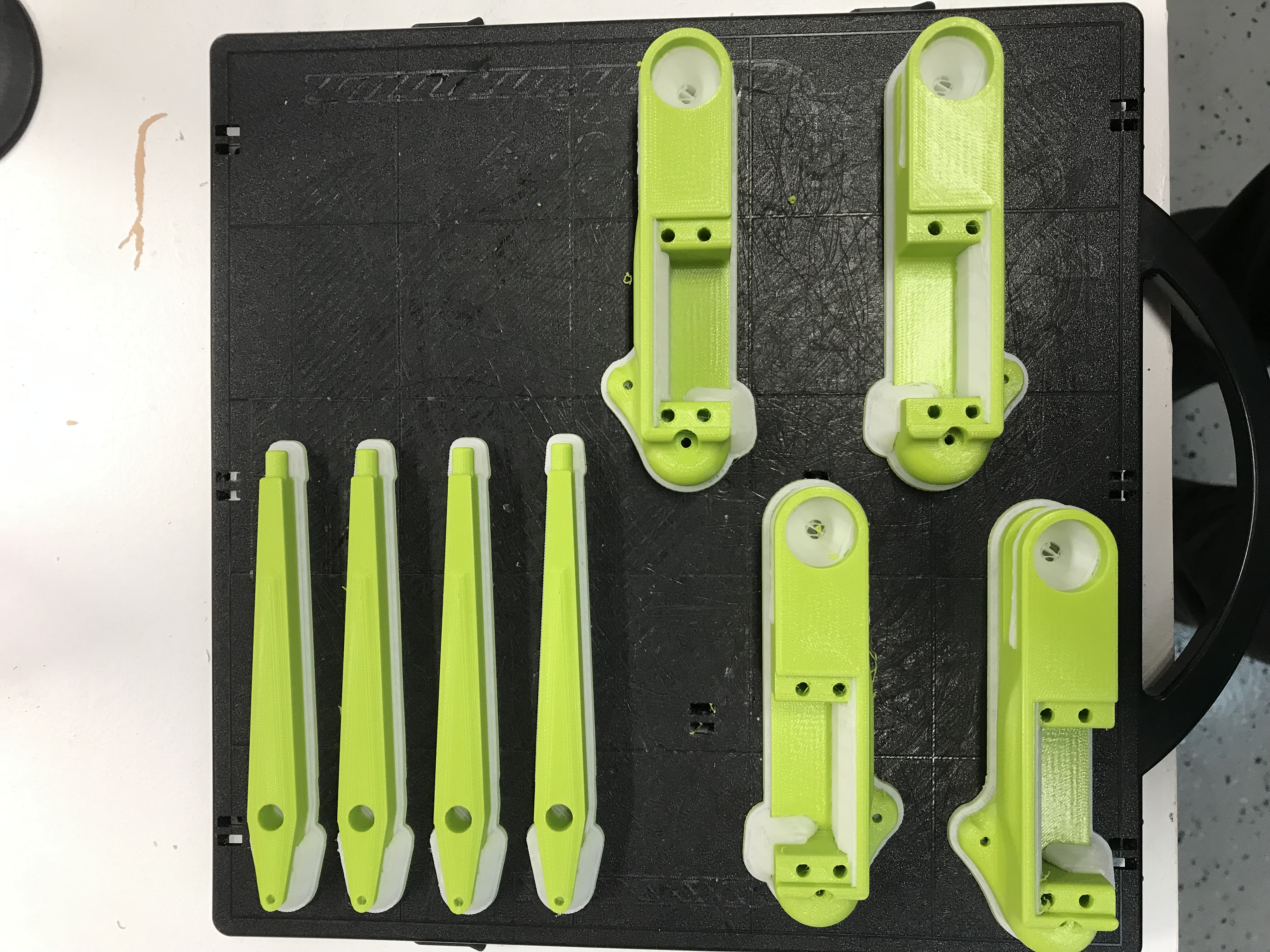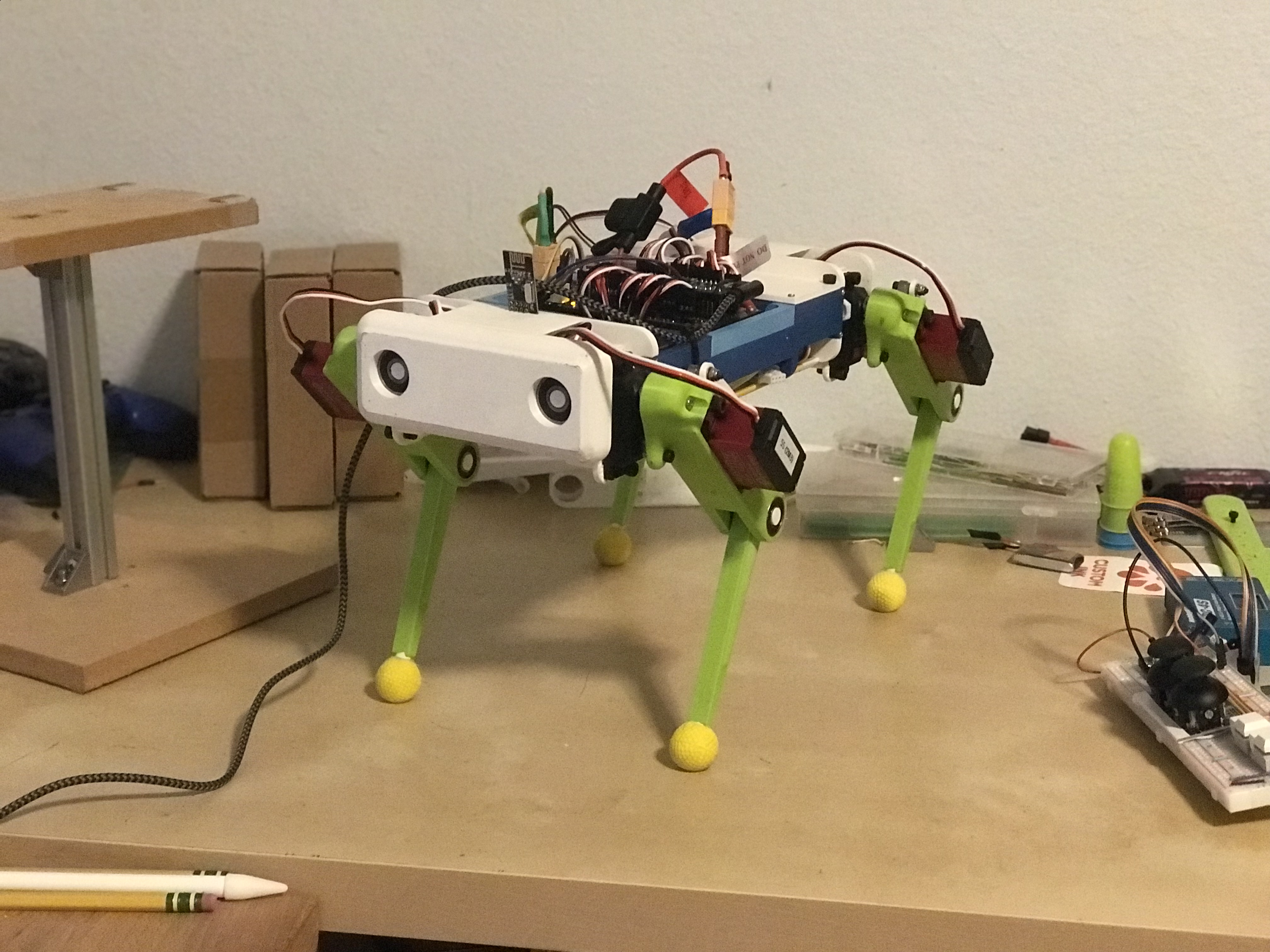ModalAI Internship
This summer I spent a ton of time at ModalAI, a company I interned for. It was awesome.
While I was there, I got to work on lots of cool drones, most notably the seeker, which is super cool. Nearly everything I did was related to electrical engineering, mainly soldering complex connections and diagnosing errors in motors and boards. On the side, however, I learned a lot about robotics simply by talking to the people I worked with. The main designer of the company, Donald Hutson, explained to me how most robots fail (very, very valuable information, at least for me) and I also got feedback on my PCBs and ideas for how I can make better ones. One of these ideas was to use a 4-layer pcb, which would be a simple, yet impactful, upgrade to my board. The idea is to allocate the top and the bottom layers to signals, and make the layers between them a ground and power plane. This has a few benefits:
- Routing is much easier, since there is no need to have ground or power pools on the signal layers
- Noise reduction (slightly) due to the large ground plane in the middle
The people I worked with also had some really cool projects. One of them is building an open-source harmonic drive system as cheaply as possible. He uses oDrive, an extremely high-quality open-source brushless motor driver (which I really wanted to get early in the quadruped project). I got to see his prototypes too, which worked very well! He explained to me that harmonic drive systems are popular in robotics because they are very reliable, have very little backlash, and are super accurate. One of the difficulties in making harmonic drive (strain weave) gears is that tolerances must be incredibly low to avoid gear slippage or binding. When done right, however, these gears can be incredibly efficient and powerful; this is one reason they are used in the NASA mars rovers.
Additionally, I got lots of feedback on my own project, the quadruped! The best part about being there is that the people there have an immense amount of experience. They could foresee problems I that I hadn’t even explained to them yet, which was pretty cool. As a result, they had ideas that I had never thought of. One such idea was the use of pneumatics in quadrupedal/compliant robots. Pneumatics can be fast and incredibly powerful, but also very sensitive to external forces, since air is inherently easy to compress and (compared to hydraulic or geared system). Measuring an external force can also easily be achieved with a pressure gauage. This makes it very good for robotics, since (theoretically) a peneumatic robot could be very reactive to unexpected contact. Spot, by Boston Dynamics, probably incorporates pneumatics, for example. Compared to a geared system, I think that hydraulics could work in a similar fashion as pneumatics. According to this video, Atlas uses hydraulics as well.
If that wasn’t enough, I got a few bonuses too! They use a phenomenal 3d printer from Statasys that created new quadruped legs (these are a new, shorter design… updates coming on that soon!) for me. The tolerances are CRAZY good.


I also had to manage some 3d printing jobs while there, which meant that I learned how to use an SLA 3d printer. This was really cool to learn, especially because it is so different when compared to FDM printing.
Me in the future here: Learning how to use the SLA printer was actually very beneficial for school, when I had to use one for a project. I knew how to do most of the 3d printing already, making the project much easier!
I’ve always wondered how technical companies, making complex products, can truly operate; a designer’s understanding and care of their creation can never be fully realized by the people assembling the device. The small things, like how finely to tighten screws and how certain elements should line up can never be matched by someone who isn’t present in design.
But this is where I was wrong. Because when the people building the products have a passion for the project too, they can match the intiimacy of the designer; the care felt by the maker.
It’s the ultimate thing I’ve learned while here. The people I worked with cared about the things they were making because techniques used by the designer were things they wanted to use in their own projects too. They all had a respect for the machines they were making. Everyone I worked with was technical, all had a passion in robotics. Just like me.
This environment, one of creativity and learning, is what I hope I can create around the people I work with and be a part of when I work on future projects.
I think this summer was well spent.
